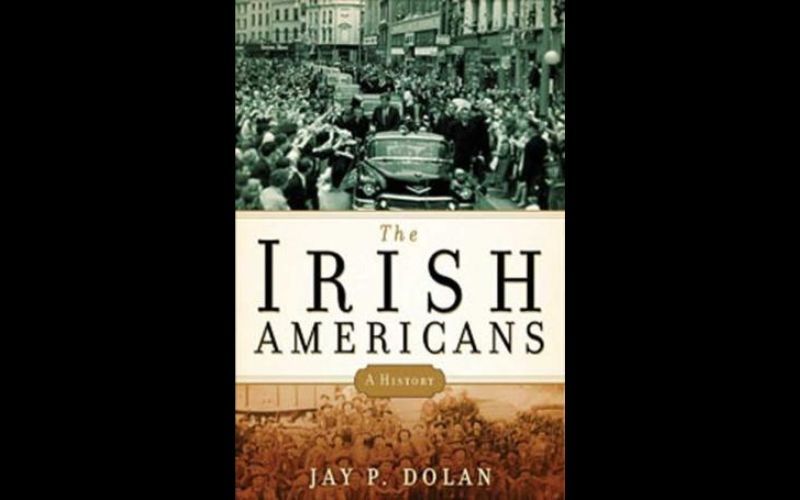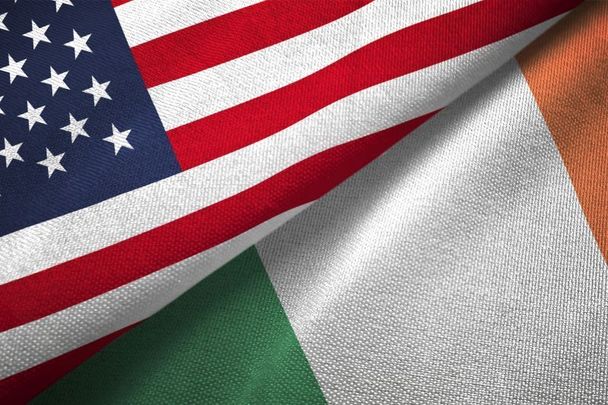32 million US residents claim Irish descent—I am one of them, but do I consider myself Irish American?
I answered this question after I read Jay P. Dolan’s history book "The Irish Americans" (2008) during my graduate studies at the William J. Flynn Center for Irish Studies at the University of St. Thomas in Houston, Texas.
I emigrated from Ireland prior to the Celtic Tiger snoring old and grey and full of sleep—for the love of a pilgrim soul Texas girl and with the romantic ideal that America was still the land of opportunity.
After several years of teaching, and as I approached the end of my graduate studies, I encountered Dolan’s book in Dr. Lori Gallagher’s Irish American Experience class. I never imagined I would study Irish history while living in America, and I was initially ambivalent about Dolan’s book; however, the irony of examining my Irish identity while immersed in American culture profoundly impacted my understanding of the Irish American experience.

"The Irish Americans: A History" by Jay P. Dolan. (Bloomsbury)
Dolan was inspired to write "The Irish Americans" because the last history written on the subject was William Shannon’s "The American Irish" in 1963. Much has happened within the Irish American community in the past 50 years, and Dolan’s book speaks to that unexamined history.
His book focuses on four major themes that have dominated Irish American history: politics, religion, labor, and nationalism (p. ix). These four themes are integrated into the four parts of the book, which are chronologically ordered.
Part One: A Forgotten Era, 1700-1840 tells the story of the arrival and transitioning of the Irish.
Part Two: The Famine Generation and Beyond, 1840-1920 provides insight into the development of the Irish into American patriots.
Part Three: Becoming American, 1920-1960 details the rise of the Irish, from the city streets to positions of political and economic power, as well as the Golden Age of Irish Catholicism.
Part Four: Irish and American, 1960-2000 demonstrates the political triumph of the Irish beginning with Al Smith’s presidential run in 1928, James M. Curley’s success with Irish personality politics in the 1940s, and finally the remarkable election of the first Catholic president, Irish American John F. Kennedy, in 1961.
One of the strengths of the book is that each chapter offers anecdotes about Irish American history. In Chapter 1, an Irishman sends a letter to his brother who had emigrated to Pennsylvania in 1773. He writes about the woeful conditions in Ireland, then oppressed under British colonist rule, but expresses his happiness that his brother is “out of a Land of slavery into a land of liberty and freedom” (p. 7).
Later in Chapter 1, the young nationalist Matthew Cary sneaks onto the ship aptly named America dressed like a woman in 1784. Cary was a wanted man in Ireland for writing pamphlets advocating for the repeal of the penal codes against Roman Catholics (p. 30). Dolan tactfully places these anecdotes throughout the book, which become touchstones for enriching the historical narrative.
One criticism is that I was disappointed the book did not discuss the contribution of Irish American literature such as writers like Eugene O’Neill, F. Scott Fitzgerald, and Flannery O’Connor to name a few, and there is no mention of Irish American musicians or sports figures. To be fair to Dolan, as an astute historian, he is aware of these unexamined fields and decided to not include them in his 368-page book. His hope is to leave this to another historian (p. xi)
Apart from this minor criticism, I recommend the book for what it purports to be—an informative, historical survey of Irish Americans. It decentered many of the preconceived ideas I learned in the Irish secondary school system about the Irish in America.
Dolan’s book was unexpectedly a process of relearning Irish American history. I suggest that the book is ideally suited for the Irish Studies scholar and student, yet it also appeals to a readership seeking to better understand the relationship between both nations. Irish and American readers will both learn more context of their respective histories and appreciate the fascinating complexities of emigration and immigration.
On the last day of my Irish American Experience class, during a reflection on Dolan’s book, my professor asked, “Do you consider yourself Irish American?” After well over a decade living in America, I had never questioned my identity because I invariably identified as a proud Irishman. Although I do have dual citizenship, I hesitate to call myself an Irish American, but Dolan’s book opened that door.
The conclusion I have drawn about the Irish American experience is best represented by two lines from Seamus Heaney’s poem “Terminus”, “Two buckets are easier carried than one, I grew up in between”—I imagine that these two buckets, one Irish and one American, carried together, counterbalanced on either side, encompass the Irish American experience.
"The Irish Americans: A History" by Jay P. Dolan. Bloomsbury Press, $16.
*Eamon O'Caoineachan, originally from Co Donegal, received his Masters in Irish Studies at the University of St. Thomas in Houston and now works as a freelance writer and poet.




Comments